“I don’t know what to do with my students because all they have is crayons!”
Have you said that to yourself lately? It’s a sentiment that we’ve heard over and over from art teachers as this school year begins.
Whether you’re teaching virtually and relying on students’ own materials at home, teaching on a cart without the ability to share materials or teaching in person with a limited budget, a lack of materials is always a source of concern for art teachers.
Often times crayons get a bad wrap. They’re usually the bottom of the barrel, last resort of art making tools. But what if I told you that students could create beautiful pieces of artwork using only crayons? And not only that, but learning how to control the pressure of crayons can be a great way to help students develop fine motor skills. I call that a win in my book!
The key is focusing on the possibilities that crayons can offer and not the limitations. And believe it or not, there are LOTS of possibilities when it comes to crayons!
Click the yellow button below to download our “10 Creative Ways to Use Crayons” PDF:
Check out these 10 techniques to help you and your students get creative with crayons:
Technique #1: Create Value
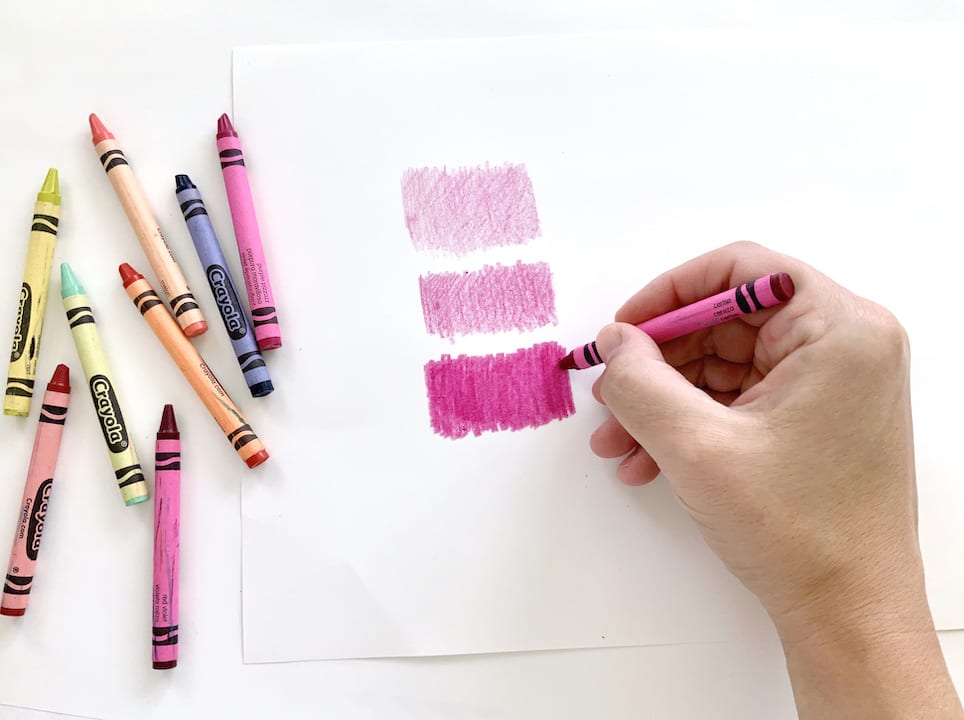
– Press light to create light values.
– Press hard to create dark values.
– Press in-between to create medium values.
When to use this technique: This technique is especially helpful when you only have a limited amount of colors but want to add variety. For example: if you only have 1 green crayon, but want to color grass, tree leaves and flower stems.
Technique #2: Layer Color
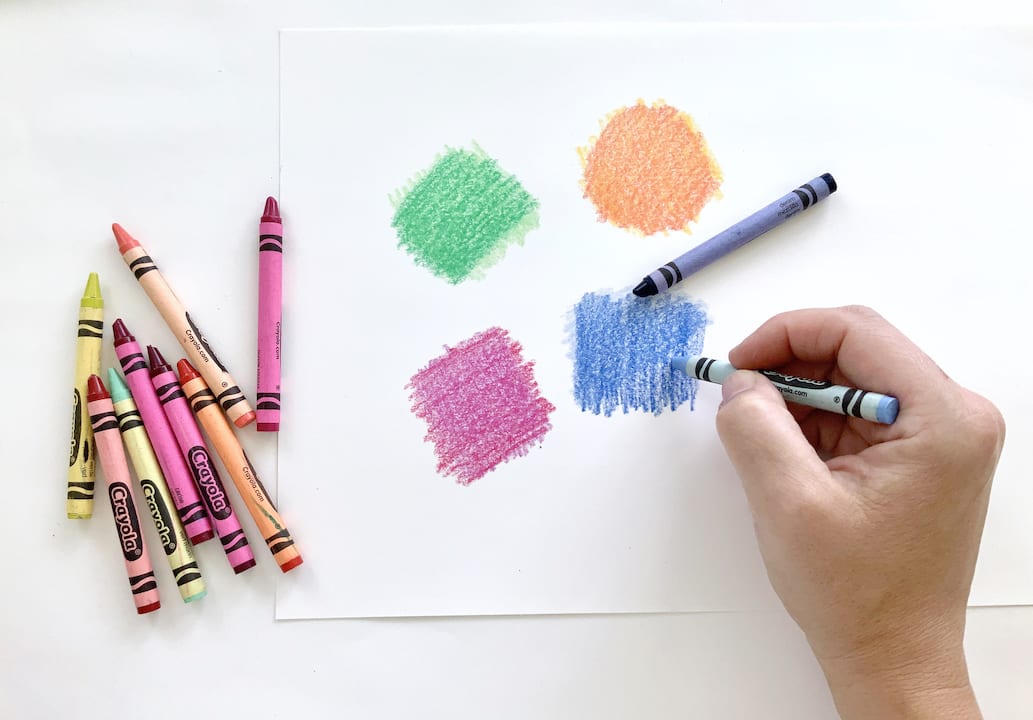
– Lay down a light layer of one color.
– Choose another color to add on top. It can help if you color the opposite way to help your coloring look smooth!
– Repeat with as many colors as you’d like to create custom colors!
When to use this technique: This technique is a great way to “level” up a crayon artwork. It unlocks a whole new possibility of colors, especially if color choices are limited.
Technique #3: Use a Color Scheme
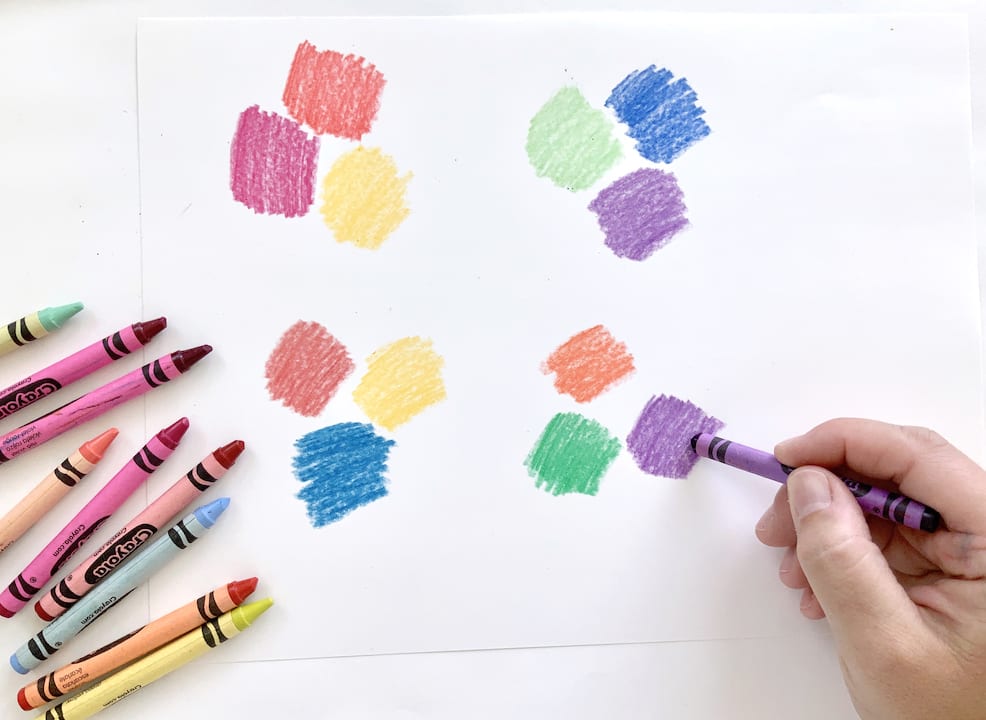
– Limit the color scheme to evoke a mood or focus on a specific color family.
– Try warm colors, cool colors, primary colors or secondary colors.
When to use this technique: This technique is a great way to sneak in some color theory without using paint! By limiting the color palette, students can explore how color can affect the mood of an artwork.
Technique #4: Add Contrast
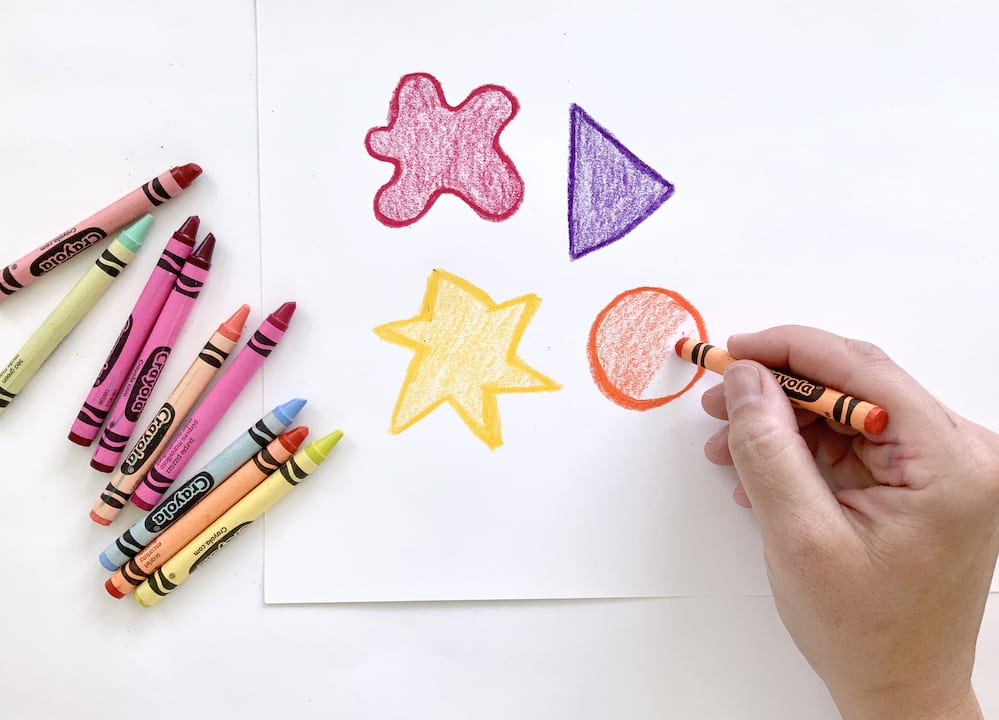
– Create a dark outline around a shape by pressing hard.
– Fill in the shape with the same color, but press lightly.
When to use this technique: This technique is great for middle grade elementary students who are looking for ways to make their artwork look more polished.
Technique #5: Add Variety
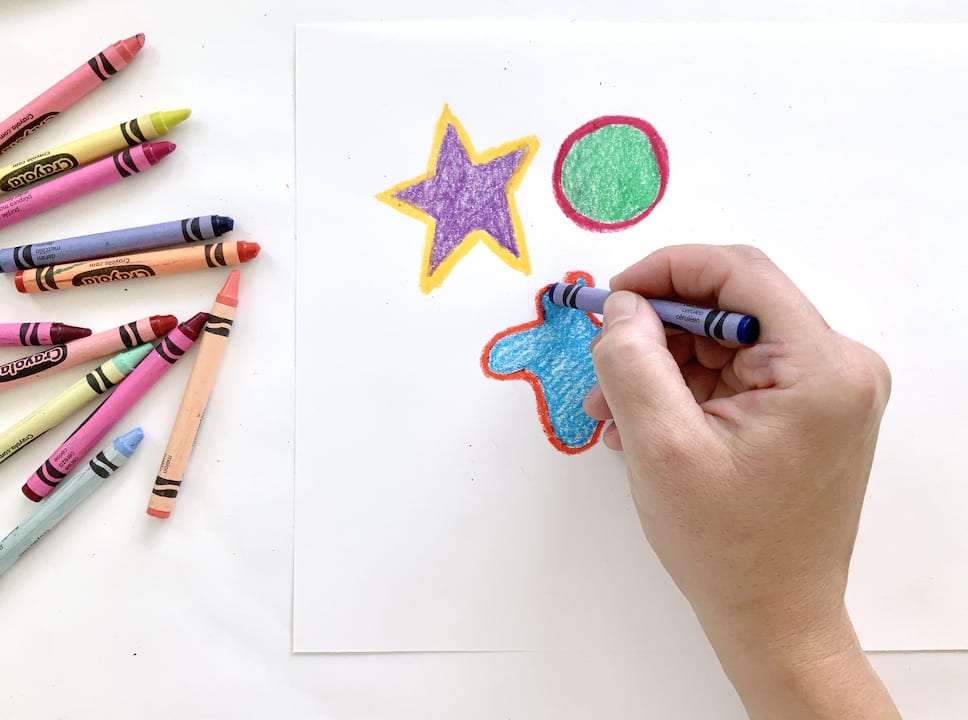
– Create a dark outline around a shape by pressing hard.
– Choose a different color to fill in the shape, pressing lightly.
When to use this technique: This technique is great for any age and can add a playful look to any piece of artwork.
Technique #6: Add Texture
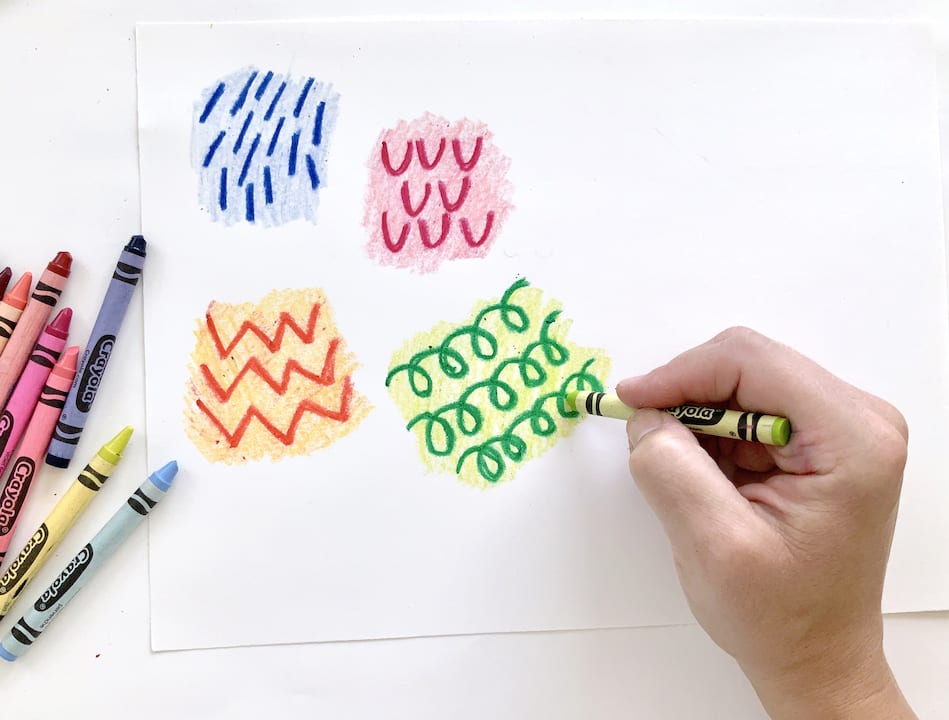
– Press hard to create dark texture lines.
– Experiment with different lines; straight, curved, zig zag, curly, etc. Each line will create a different texture.
– Color lightly on top with the same color or a lighter version of the color.
When to use this technique: This technique is great to use on anything with a texture: animal fur, snake skin, hair, tree bark, etc.
Technique #7: Blend
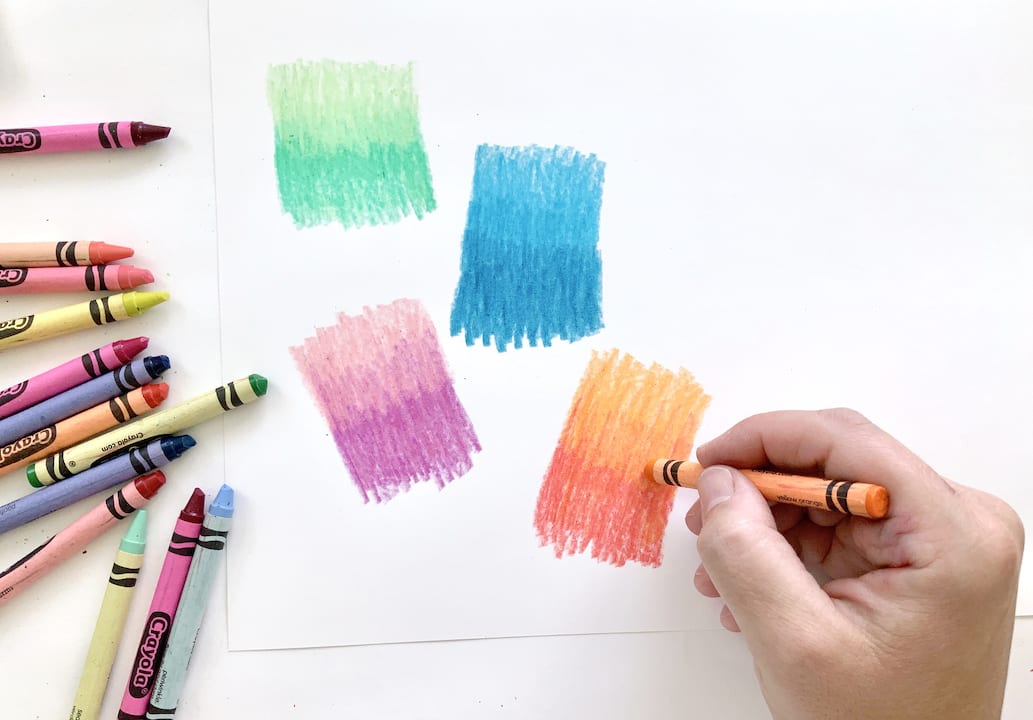
- – Lay down a section of color, and use medium pressure.
- – Choose another color. Lay down another section of color next to the first.
- – Use medium pressure to blend between the two sections using both colors.
When to use this technique: This technique can break up the medium when filling a large area in an artwork, like the sky or water.
Technique #8: Create Texture Rubbings
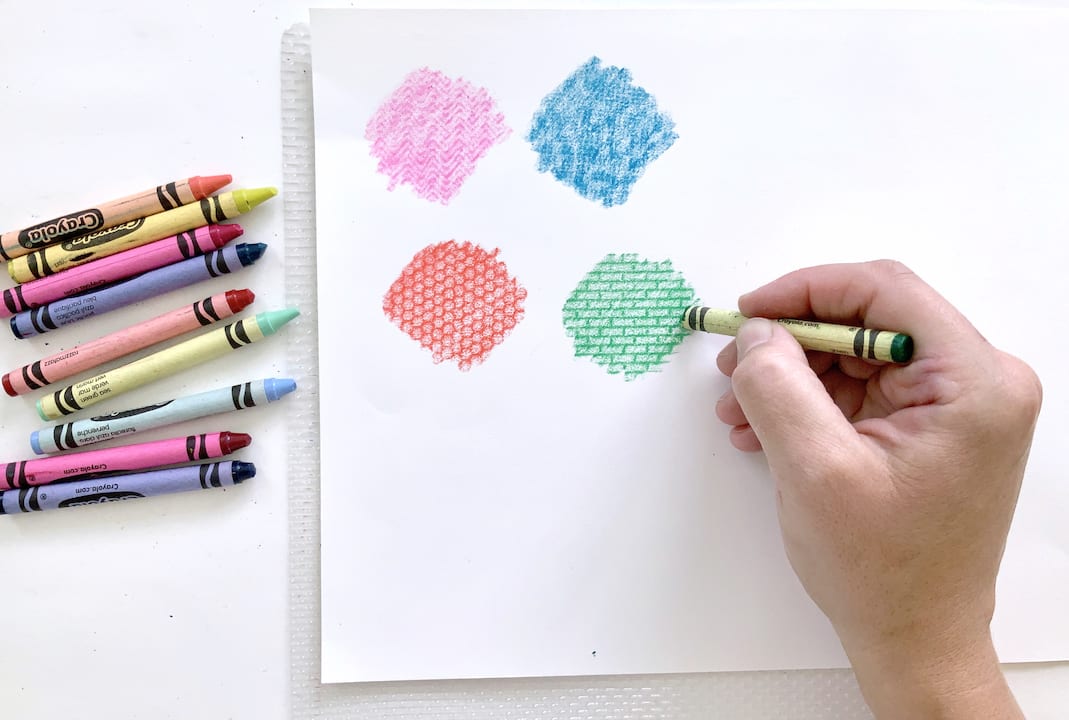
– Find a flat, textured object; a leaf, cardboard, rubbing plates, etc. Place it on a table.
– Put a piece of paper on top and color with a crayon.
– The texture of the object will show up on the paper!
When to use this technique: This technique can be a fun addition to add emphasis to an area of your artwork or to add interest to large areas. You can color on top of the texture with a lighter color to fill in white spaces if you choose.
Technique #9: Hatching & Cross Hatching
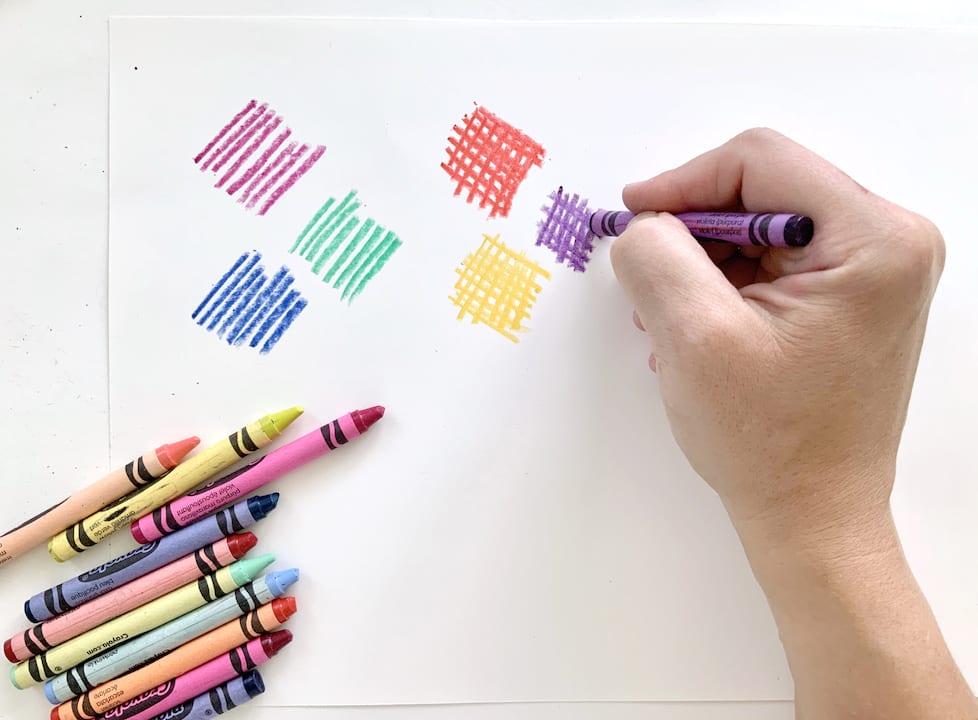
– Hatching: use short, parallel lines that are close together to create shadows.
– Cross-hatching: use hatching first, then add perpendicular lines to create a darker shadow.
When to use this technique: This technique is a great way to add shadows to objects to help make them look three-dimensional.
Technique #10: Pointillism / Stippling
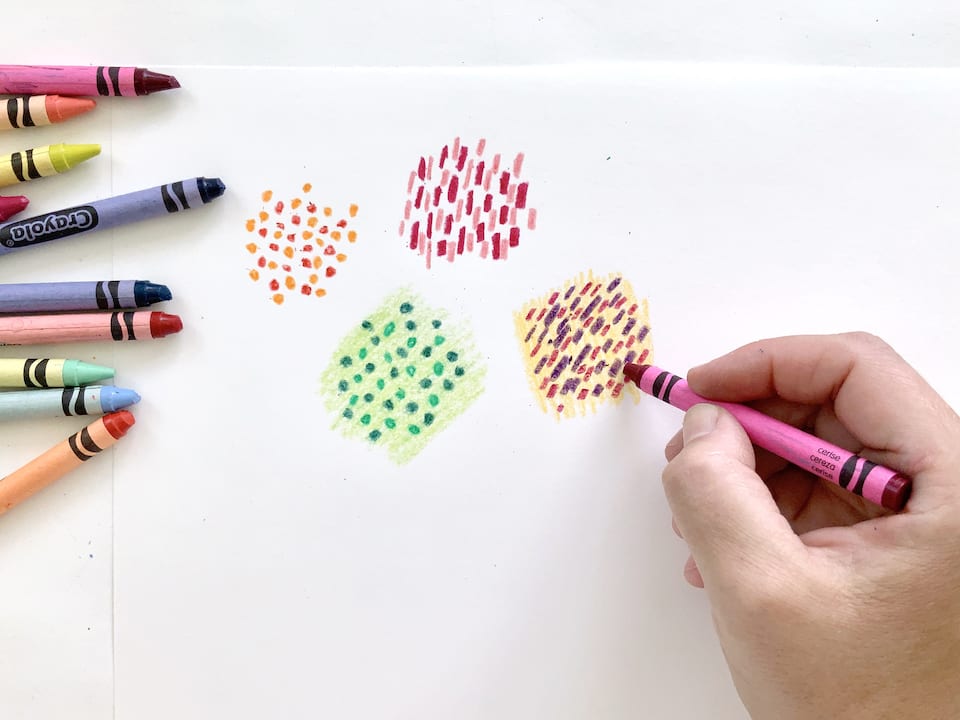
– Use hard pressure to add dots or short dashes.
When to use this technique: This technique can add interest to large areas like grass or the sky, or you can even use it on top of another color to add some dimension.
So this year, don’t fear using crayons – embrace them. The possibilities might surprise you!
Click the yellow button below to download our “10 Creative Ways to Use Crayons” PDF:

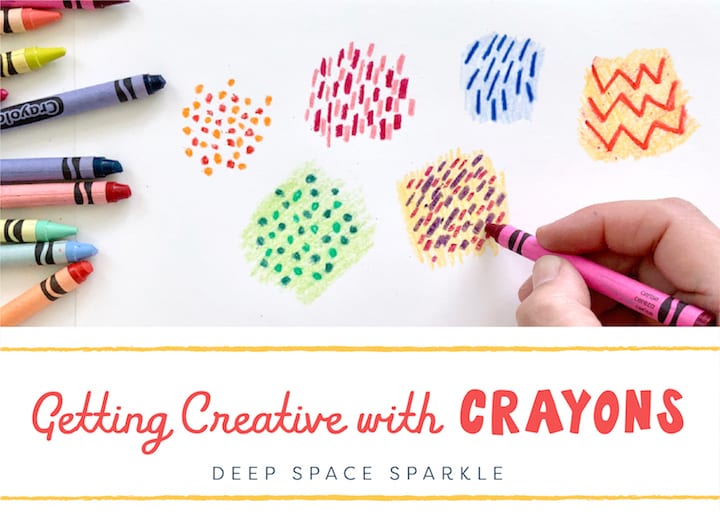












Yay! I like this.
This was a HUGE hit with my virtual students. Many of them recorded themselves describing how they experimented with the crayons. Thank you!
Yay! We’re so happy to hear that!
Wow! What fun! I ALWAYS shy away from crayons but this lesson is that and even more! Values- color groups – accented edges. Thanks for this insightful lesson and as most artists already know. This could easily include colored pencils.
I am right on board with Ana – not a huge crayon fan, but this is great! Perfect lesson in this pandemic era of not having my art room – easy and gratifying!!
Love this! Great ideas even for my personal doodling and card making with watercolor pencils. Thanks!
Wow its no nice to learn something new to do with crayons
Love this. You always provide such great ideas and content. Thanks
This is but one more reason to love Deep Space Sparkle and all that you stand for! Thank you for your generosity and creative ideas. As always, you have inspired me.
I have had teachers turn up their noses when I have used crayons, as though they are expecting something they don’t already know. You’ve provided incentive to keep using them. Re: fine motor skills I love to do rubbings of real leaves during autumn months. I’ve taught medically fragile students for several years. I was surprised to learn that the skill required, to hold the crayon, and push using moderate pressure, is beyond possible. Instead we paint the leaves (watercolor or tempera) and then do monoprints. This is possible because they can push against with the palm of their hand, or elbow while the paper is on the tabletop. By accident I discovered that white papertowels receive the paint the best and capture more of the beautiful leaf details. Thanks for providing the possibilities with crayons.
We love using crayons and love the portability. There travel anywhere! Nature study is so much fun when crayons come into play…it’s a texture feast! Save the work and use it to paint over and get a completley different work employing a new medium.
Very Helpful! A Nice reminder!
Mike Artell was the only author a few years ago that actually only used crayons to illustrate his trilogy: “The Really Weird Pet Store”, “The Really Weird Planet” and “The Really Weird Jungle”.
His work in Crayon used the above techniques and make gorgeous books. They may be out of print now…couldn’t find them on Amazon.
Also, Delia and Marty Wach are authors/illustrators that use a fair amount of crayons in their work on their children’s books. Anyway, thank you again to Team Sparkle for all your helpful suggestions! You make us all “Sparkle” !
It’s amazing how many of these techniques I use already. Thank you for sharing.
My third graders are layering colors to create their own paper for our bird pictures!
What fantastic ideas to explore crayons technique!!! I take these ideas to use in my lessons.
Crayons are a fantastic way to create end explore colors in this COVID-19 era. I used to work with watercolors but this technique is not the most suitable in class this year, as students must be sit all the time, no moving around classroom, not to share materials, etc.
These lessons will be great to use in our sketchbook lessons. Thank You!
I’m going to print the handout list of techniques & have the 6-8th grade come up with their own ways of illustration for each one. In their sketchbooks. I, of course, will model a few examples, that they are welcome to imitate & learn. A Sparkle crayon chart would be a nice thing to have!
😊 If I don’t do anything else this year, my goal is to bring back the joy of crayons!
I had a large bin of an assortment of old/new crayons in my “off limits” classroom (Covid19) this year. So I bought ziplock sandwich bags & out random handfuls & filled and distributed 109 bags! We aren’t allowed to be in the art classroom nor share supplies, so it was my “gift”- hopefully, next Spring I will be ordering more because they will have become comfortable & enjoy using them!
This is an awesome handout! Would it be possible to include the technique samples on it as well? So we can have the examples of each technique with the poster??
This is great! Applicable for all 2D media + one can embellish learning with simplified color theory for all ages.
Thank you for all you do to help us😘 generous you are.
This was an awesome way to develop color theory while using a simple material like crayons to instill the elements of art! Thanks so much for the download – your resources are always really helpful!
THANK YOU – We are on ZOOM this fall and I worried about the materials kids had on hand. This is marvelous!!
I LOVE this!! Thank you, thank you!! …things I’ve known, but am too ‘fried’ to remember…after working with students doing online learning. lol Keep it coming!
Fantastic handout!
Thank you for thinking of us teachers in this crazy time!!
Next we need one for kids who only have a pencil. 😔
Fantastic! Thank you.
Well, there you go. I have had crayons probably all of my 52 years and there you go making them exciting once again. Now I can do the same for my students and my grandchildren. Thank you so very much!!
Exactly! I was dismayed that my Elem. aged grandchildren were even rejecting brand new crayons- I figured they were not being used enough to make it popular in school, only markers is what they gravitated toward & would rather use. I got over my disappointment & am trying to open there eyes & minds & hearts to crayons! Alone or with paint resists. Cool to use white crayon on white, then add a wash of color to make it appear like magic. Also, with 6-8th graders I teach, I’ll be doing homemade scratchboards, with a random colored layer on cardboard, topped by a black/brown or purple layer. Use an open paper clip to scratch draw! 🙂
This is wonderful!!So exciting to try this with my 2nd graders. I printed the PDF but would like a picture of each technique and the simple directions under each if possible. Do you have a PDF of anything like that? Thank you!
We don’t offer a PDF but you can print the article using the share options in the post 🙂
Me too!
Pretty amazing! When I was growing up all we had was crayons so I learned how to use them in the many ways you showed. Thanks for giving crayons their rightful place in the art toolkit.
Yes! Bring crayons back to the respect they deserve! That’s what I’m trying to do this year, both virtually & in person. Even with older students.
Very useful especially at this time for internet teaching.
Thanks these are good ways/techniques and strokes to add to what I’m doing in my painting now…
Love this!! So simple but profound, and great to follow for my abstract random art brain.
I’m looking forward to using crayons more this year with middle school. They complain about “how the smell” – that’s something I never heard before until 2yrs. ago. Beyond that, I think there is an unconscious stigma about crayons being for Pre-K or Elementary. They are- they’re for everybody! I took 6-8th outside to do texture designs/patterns using leaves & crayons, to create their own wrapping paper. It went well!
Students like the variety of uses in a crayons. The crayons have made a come back in popular art projects.
Thank you for these great ideas! I am going to show my kinders these techniques.
Excellent resource for remote learning. My 3rd graders spent 2 classes on skill building with crayons or colored pencils, adding to their knowledge of color and new techniques with the limited supplies we have this year. We then created Monarch Butterflies and looked at the connection to Dia De Los Muertos through the book Uncle Monarch and some amazing videos out there about this subject.
thank you for helping me find more ways to use my crayons for art because I used to never use my crayons I used to use paint and markers all the time thank you for helping me increase my enjoyment with crayons
I’m a student of Canterbury Elementary and this was for one of my art lessons that my teacher said mrs. kleven and it was really helping me increase my heart because I don’t use my crayons as much as I use my other art material cuz I feel like they’re just useful if they have nothing to be done with and then now that I read that I look wow I think I could do a lot more things with cramps than I used to thank you for helping me out finding how I could use my cramps more helpful
Great ideas!
Excellent! We just moved and can’t find all the supplies, but my 7-year-old brother has tons of crayons. We will definitely be trying this out.
I am a fourth grader and I totally forgot what it’s like to use crayons. I’ve been using only markers and colored pencils.
Very helpful. Thanks a lot ❤️ Definitely gonna try these!!
Fantastic info. I teach the arts at a preschool and dreaded using crayons…but felt it was necessary for the “crayon” story we were doing! We often use these techniques without really mentioning/teaching the technique names!! Thank you for that!
Amazing activities.
Thank you so much
Amaze !! Thats fantastic way to use crayons for kids …this new technic is very helpful to draw with crayons